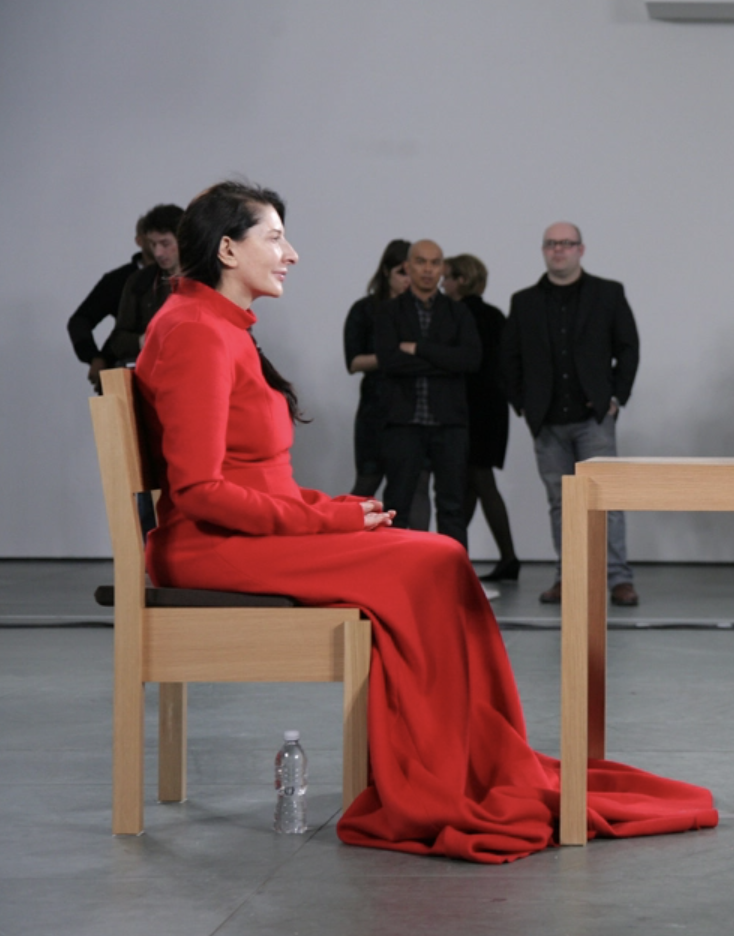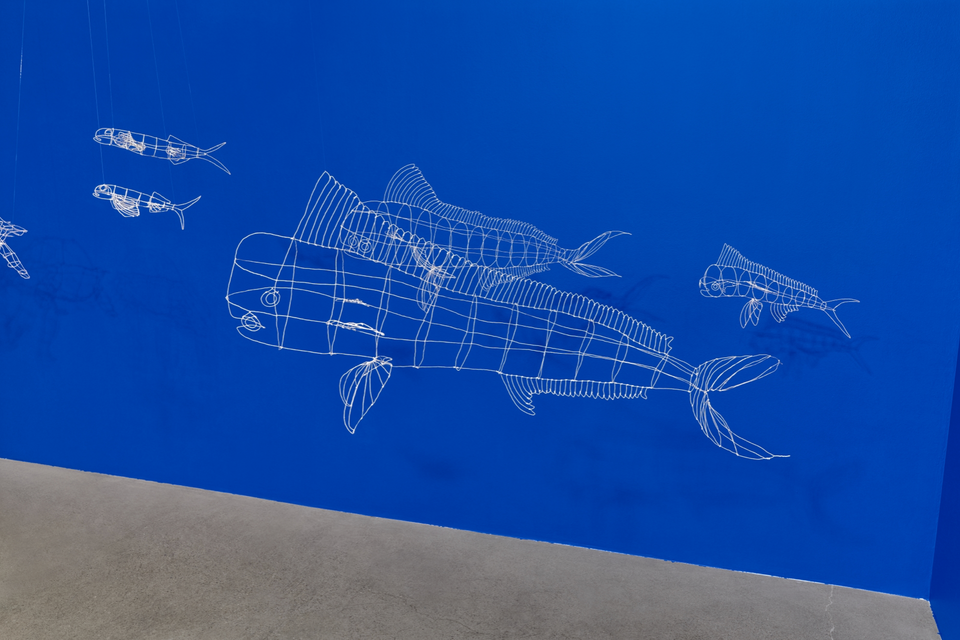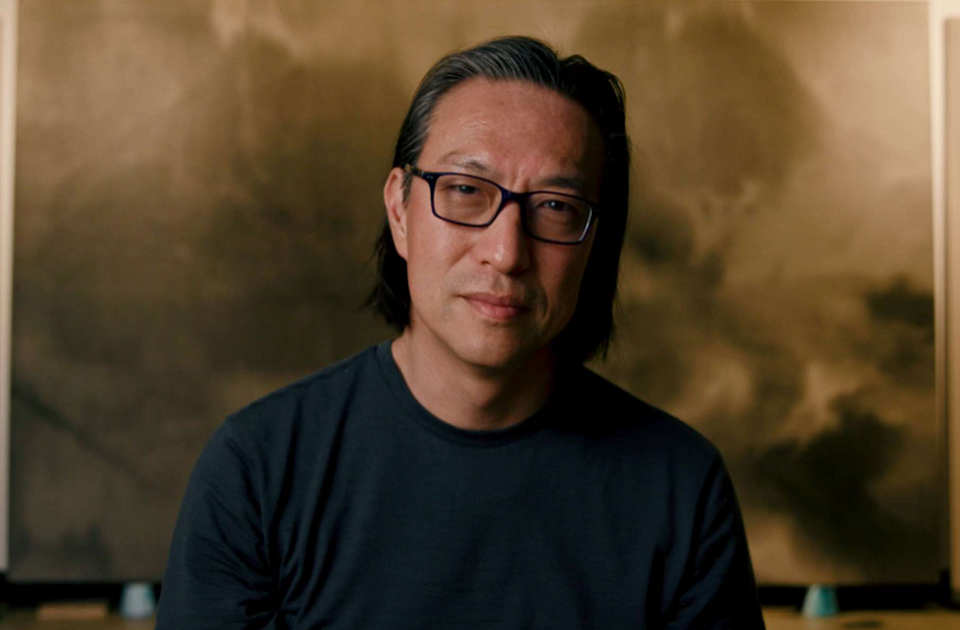The press release for Daniel Domig’s exciting new exhibition With all the Things We Build and Make (Thrust Projects, New York City, September 5 – October 12) states the following:
The complexity of the figures, part human, part animal, reference Christian iconography and relates to the existential facets of man in the concrete world. Domig’s interest lies in the possibilities of expanding the dialogue of presenting painting within new environments, where elements (figures, landscapes) relinquish their independence accepting their abstract nature within the canvas.
At first glance, it’s not at all clear what this might mean. How do elements relinquish and accept anything? Is this just one more bloated, incomprehensible bit of gallery-drivel? One might be tempted to think so. Yet, when one actually engages the pieces and considers Domig’s interest in the time-honored religious concept of “the Creator/Creature distinction,” it all becomes clear. Domig’s figures serve as analogues to himself, not in a clichéd, autobiographical way, but in the raw, existential dimension.
As Christian tradition has it, humans are created beings, and lose their bearings the minute they begin to conceive of themselves as the Creator (“ye shall be as gods,” the serpent whispered, according to the Genesis account). However, it’s clear that humans are creators of a sort, made in God’s image, carrying on His creative work in the world. There’s a challenge there, a reflexive calling, for humanity to create without losing sight of “createdness.” Humans are to see themselves as distinct from God, yet wholly dependent upon Him, working and doing His work. St. Paul said it this way: “…He is not far from each one of us. In Him we live, and move, and have our being…” (Acts 17:27b-28a)
This theme literally pulses in and out of Domig’s exhibition, as if the systolic and diastolic rhythms of the human life were nothing less than alternating considerations of autonomy/dependence dichotomy. Figures move into concrete materiality, and slip back out again, lost in abstract, shadowy brushstrokes and smudged patches of mixed color. Process emerges as a prominent theme in Domig’s work, but this is not the sterile, lifeless reflexivity of late modernism. There is a hopeful search here, a question, left hanging from the unfinished clause of the exhibition’s title (“with all the things we build and make…” what?).
A survey of Domig’s earlier work articulates a theme that continues to emerge in his work today: the miracle of animation in the work. It may be process, lines, paint, smudges, but it is also something being born and inhaling. Sometimes it feels like something dying, and exhaling. But it’s always a liminal state.
In the case of the ceramic sculpture that announces the exhibition, we see a detail human face descend (or ascend?) into primitive, pressed clay. It is at once refined, surreal, and primitive, a bit like Adam, freshly minted from the dust.
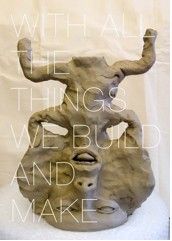
Dull grays, blacks, and browns dominate the works, but nearly every painting-somewhere-features an alarming, aggressive color, often in form of a small line, or detail. It’s not as if these colors vie with the darkness, however. Domig, remarkably, establishes them as co-existent, part and parcel of his eclectic work. This eclecticism leans toward a two-dimensionality, and so we might be tempted to consider Domig in the tradition of collage, but, in fact, his work subtly oscillates in depth. For instance, the striking figure in The Best Show (2007) gives us a square canvas, and a painted frame, and figure that seems at once behind the frame and in front of it, a cellophane-like membrane inhibiting all but his hands. The bright green lines piercing in from the edges to the center create a tension with the largely grey underworld that resides at the painting’s core. We might also note the subject’s eyes are obscured, a common element in Domig’s work. The painting does not revel in surface, as in much postmodern collage. Nor does it reach for the alluring, eroticized two-dimensional ornamentation found in the work of Domig’s Austrian predecessor Gustav Klimt. Rather, we see an existential dimension about to reveal itself. It is here, hovering on the edge of full existence, that the figure negotiates with being, autonomy, and its own process of becoming.
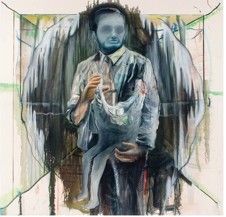
Sheer “becoming” as an “event,” is the sort of thing that excited Gilles Deleuze about Francis Bacon’s work, and we see something of that primal energy here. But Domig sees this concept in a wider frame, that of his own becoming within the Christian view of sanctification. Though it is misleading to see Domig’s pieces as intensely auto-biographical, some works grant us permission in that direction.
Within Tradition strikes such a reflective, self-conscious note, as the painting-within-the-painting theme manifests itself here as a man turned cabinet of curiosities. He’s at once a canvas himself, slipping into (or out of?) three dimensional materiality, the edges of his face spreading outward like newly cracked egg. He holds his paintings dear, carefully fixed under clasped hands, but we cannot avoid the suggestion, amid all that red, that we are witnessing an anatomy lesson, a flayed and open soul, and a shadow of a man holds center stage within him. Even that negative figure is upheld, however, by a mysterious third hand, white as milk, transparent as sky. We are clearly invited to see these paintings as illustrative of the figure’s interior world, and, by extension, Domig’s own creative struggle.
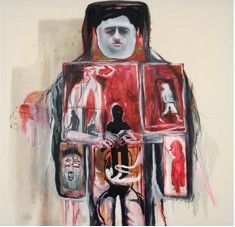
In a remarkably prescient observation, the art scholar Velton Wagner connects this arrangement of paintings with an altar screen in a Christian church.1 Indeed, the mode of expression, while intensely dark and personal in the painting and more ecumenical/historical in a church, does achieve a common goal: to unite the small stories, and fragments of stories, into a larger whole. That the paintings detail contradictory things is simply to tell the truth about the contradictions of human nature. To unite them is to create a man, and, perhaps, chart a large meta-story of redemption, as in this altarpiece from the chapel of Schloss Mittersill, Austria, a sacred space Domig has frequented throughout his life.
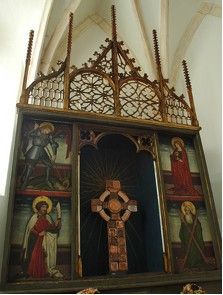

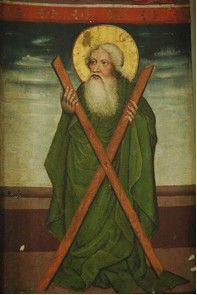
Indeed, one of the show’s most interesting dimensions is the exhibition design itself, envisioned and constructed by the artist himself. Again, it is process exposed, but animated. Rough, wooden figures watermarked and unsanded, are stitched together in a rustic fellowship: wooden frames/bodies, with painted heads atop each, framed by an “X”/cross pattern not unlike the saint depicted in the altarpiece above. To accommodate this unorthodox presentation, some paintings had to be placed sideways in the torsos of these figures. This creates a tension for those who wish to view the work cleanly, but Domig doesn’t permit such clinical niceties. Like the man in Within Tradition, they are contained and held in a body that may or may not be willing to release them.

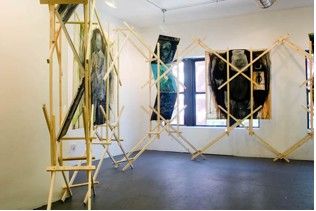
The artist’s product does, in the end, stand apart from the artist. The moment a work is declared done, it is relinquished to public interpretation, never to be fully pulled back. Domig’s figures are, indeed, autonomous, as the exhibition’s flyer describes. But they slip in and out of materiality, as if to nod back to their creator, in deference. Domig confesses, here, that he continues to struggle with the autonomy/dependence question, and so his work is shot through with spiritual references and insinuations that never quite reach a full resolution. And that’s to our benefit, as the best work emerges from that tension.
The show runs until October 12.
From the website:
Jane Kim/ Thrust Projects is pleased to announce the second solo exhibition of Daniel Domig, entitled With all the Things We Build and Make, a new installation encompassing large and small paintings in a circular, free-standing wooden structure. By making the painting process a form of construction, Domig continues his research into the materiality of objects. The substance for the paintings as well as the installation is the interaction between space and figure in which boundaries both embrace and separate. The emphasis between form and content becomes less about one definitive meaning as the works serve as a fill-in and fenestration to the unoccupied space in the structure, allowing the viewer to peer into Domig’s artistic self and world views from the inside. The complexity of the figures, part human, part animal, reference Christian iconography and relates to the existential facets of man in the concrete world. Domig’s interest lies in the possibilities of expanding the dialogue of presenting painting within new environments, where elements (figures, landscapes) relinquish their independence accepting their abstract nature within the canvas.
Daniel Domig (b. 1983) is a graduate of the Academy of Fine Arts in Vienna. His 2006 debut solo exhibition Don’t ask for a name now, maybe you’ll find it later at Thrust Projects was reviewed in Artforum.com (Critic’s Pick, Oct 9, 2006). Recent exhibitions include his first one-person museum show, Daniel Domig: Neither Fear nor Courage Saves us, Museum Engen, Germany, accompanied by a catalogue (edited Städtisches Museum Engen + Galerie, 2008) and Daniel Domig: BEASTBODYBREATHING, Galerie Karol Winiarczyk, Vienna. He lives and works in Vienna.
1 From the essay “Transfigurations,” in the catalog Daniel Domig: Neither Fear Nor Courage Saves Us (Engen, Germany: Städtisches Museum Engen, 2008).

